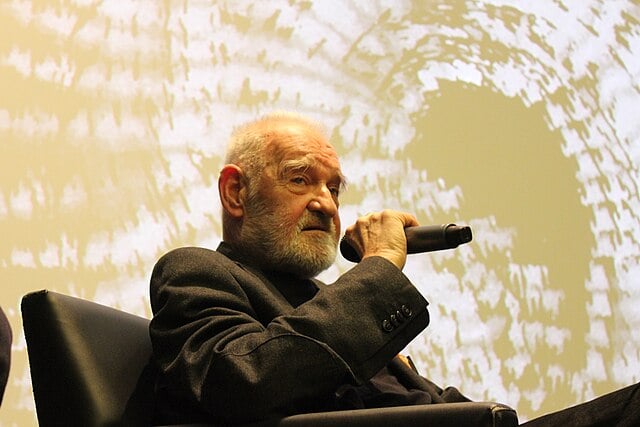Will Heaven Fall on Us? A Béla Tarr Retrospective, which aired in cinemas this summer, confirms the status of the Hungarian director as an auteur with a monumental vision.
Watching the five films of the retrospective, with a total run time of 981 minutes (16.4 hours), is not an easy task: Tarr is a demanding director, with infamously long shots which can test even the most seasoned cinephile. But the test is a deeply rewarding one, offering profound meditations which go beyond the particular social environment he portrays to something intrinsic to human nature.
Tarr, born in Hungary in 1955, is best known for his magnum opus, Sátántangó, which enjoys the status of the cinematic equivalent of Ulysses. Running for nearly seven and a half hours and based on the structure of a tango (six moves forwards, six back), it’s a vast work which pushes the limits of film. Yet the retrospective shows that there is far more to Tarr than Sátántangó: each film is worth watching in its own right, and viewing the five over the course of a month allows you to notice the threads and motifs which run throughout his work.
Visually, Tarr is spectacular. Klassiki writes that ‘few filmmakers are as distinct as Béla Tarr’, and it’s not hard to see why. There are breathtaking pans across barren, muddy fields which stretch endlessly into the distance, and stark shots of nameless Hungarian towns. Central to Tarr’s style is the combination of long tracking shots and leading lines which extend orthogonally to the direction of the camera. This creates a sense of depth basically unique to Tarr, with groups or individuals slowly walking away from the camera down paths which seem interminable.
The openings of his films are always stunning. Damnation begins with a typically desolate landscape, over which a cable car track extends into the distance: the empty cabins hopelessly chug onwards, immediately establishing the Sisyphean ennui that so effectively haunts his work. The Man from London, a noirish thriller, starts with an abstract vertical pan of a boat, the bow bisecting the screen, with a faded grey on one half, almost total darkness on the other.
Other openings start with animals, as if humans are just one species amongst many doing their best to survive the unforgiving natural world. Sátántangó begins in a dilapidated farm completely devoid of human life. Later in the film, a group of horses flood another nameless town: the clatter of their hooves a jarring contrast with the silent suffering.
However, humans are not always so absent. The stunning opening to The Turin Horse tracks a beaten horse pulling a merciless old man. As the camera flies through mist, Mihály Víg’s soundtrack blares over their journey. It seems for a moment that humanity has tamed the wild environment. Yet the following two and a half hours portray the suffering of the old man and his daughter during a biblical windstorm. As the two of them go about their tasks with monotonous regularity, it becomes clear that they are just as subjugated to the landscape as their tortured horse is to them.
Not everything is so despondent, though. Each film features moments of absurd humour: there are extended scenes of dance and singing – in Sátántangó a man balances a stick of bread on his nose, whilst in The Man from London it is a snooker ball; Damnation has a bizarre parody of Singing in the Rain. And even during the moments of most intense pain, the beauty of his cinematography is a bewitching, lamentable sight.
Having vowed not to make any more films, what we have already must suffice – and it certainly does. His works can be watched and rewatched ad infinitum, or rather, for as long as humankind exists, which, Tarr reminds us, is not going to be forever.


